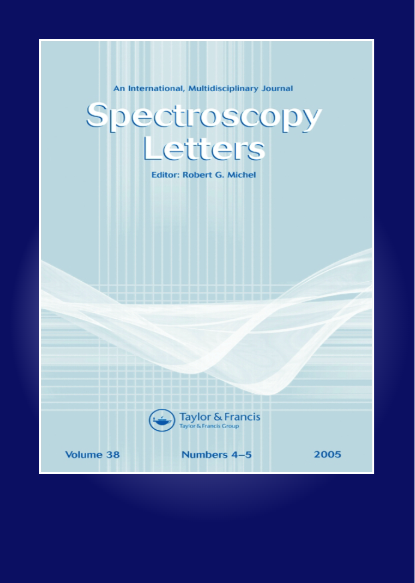Spectral characteristics analysis of typical ground objects in Poyang Lake wetland based on “Zhuhai-1” hyperspectral data
IF 1.6
4区 化学
Q3 SPECTROSCOPY
引用次数: 0
Abstract
Abstract Hyperspectral image data provides new ideas and methods for the fine classification of wetland. Research on wetland spectral characteristics lays the foundation for wetland classification and improves classification accuracy. Based on “Zhuhai-1” hyperspectral image data, combined with the Pure Pixel Index (PPI), this paper extracted the average spectral curves of 11 typical ground objects in Poyang Lake wetland. Two mathematical transformation methods, namely, the continuum removal and the first derivative, were used to analyze the spectral characteristics of the ground objects before and after transformation, in combination with spectral characteristic parameters. The method of combining the mean distance of ground objects with the range of data error was used to select characteristic wavelengths before and after spectral transformation. Finally, the Mahalanobis distance method was used to verify the recognition effect. The results demonstrate that: (1) Spectral transformation can effectively amplify the differences between ground objects. The continuum removal led to an increase in the characteristic bands of four types of vegetation and the emergence of characteristic bands of four types of other ground objects. The first derivative method extended the characteristic bands of four vegetation from red-edge to near-infrared. (2) The method of combining the mean distance and the data error range can effectively screened out the spectral characteristic bands of typical ground objects in Poyang Lake wetland, resulting in hyperspectral dimensionality reduction. (3) The Mahalanobis distance method validates the recognition effect of the characteristic bands. In the screened characteristic bands, the Mahalanobis distance between different ground objects is larger than that between the same ground object, except between shoaly land and road. This study offers valuable insights into spectral recognition and classification of freshwater lake wetlands, and also demonstrates the potential of “Zhuhai-1” hyperspectral image data in wetland research.基于“珠海一号”高光谱数据的鄱阳湖湿地典型地物光谱特征分析
摘要高光谱图像数据为湿地精细分类提供了新的思路和方法。湿地光谱特征的研究为湿地分类奠定了基础,提高了分类精度。基于“珠海一号”高光谱图像数据,结合纯像素指数(PPI),提取了鄱阳湖湿地11个典型地物的平均光谱曲线。采用连续体去除和一阶导数两种数学变换方法,结合光谱特征参数,分析了变换前后地物的光谱特征。采用地面物体平均距离与数据误差范围相结合的方法来选择光谱变换前后的特征波长。最后,利用马氏距离法验证了识别效果。结果表明:(1)光谱变换可以有效地放大地物之间的差异。连续移除导致四种类型植被的特征带增加,并出现四种类型其他地面物体的特征带。一阶导数方法将四种植被的特征波段从红边扩展到近红外。(2) 将平均距离和数据误差范围相结合的方法可以有效地筛选出鄱阳湖湿地典型地物的光谱特征带,从而实现高光谱降维。(3) Mahalanobis距离方法验证了特征带的识别效果。在筛选的特征带中,不同地物之间的Mahalanobis距离大于同一地物之间的距离,除了浅滩和道路之间的距离。这项研究为淡水湖湿地的光谱识别和分类提供了宝贵的见解,也展示了“珠海一号”高光谱图像数据在湿地研究中的潜力。
本文章由计算机程序翻译,如有差异,请以英文原文为准。
求助全文
约1分钟内获得全文
求助全文
来源期刊

Spectroscopy Letters
物理-光谱学
CiteScore
2.90
自引率
5.90%
发文量
50
审稿时长
1.3 months
期刊介绍:
Spectroscopy Letters provides vital coverage of all types of spectroscopy across all the disciplines where they are used—including novel work in fundamental spectroscopy, applications, diagnostics and instrumentation. The audience is intended to be all practicing spectroscopists across all scientific (and some engineering) disciplines, including: physics, chemistry, biology, instrumentation science, and pharmaceutical science.
 求助内容:
求助内容: 应助结果提醒方式:
应助结果提醒方式:


